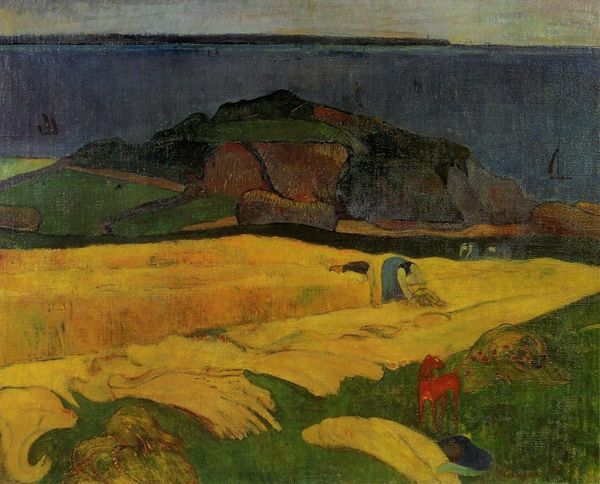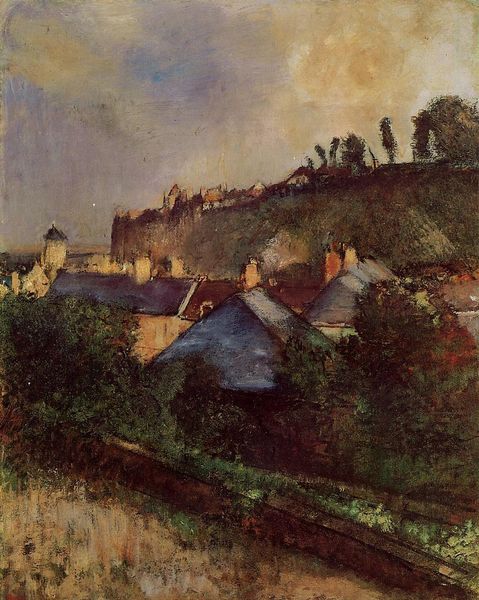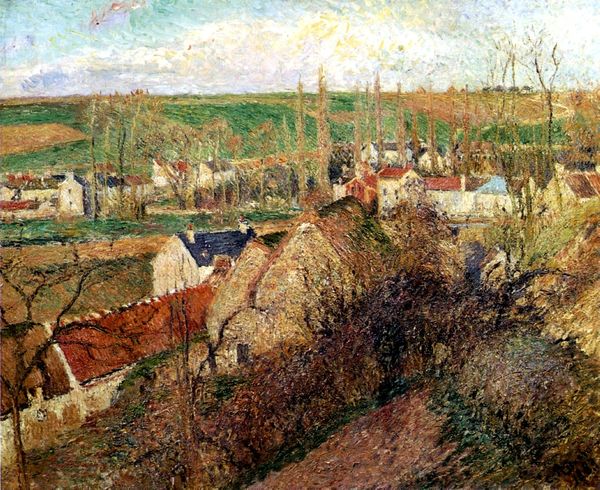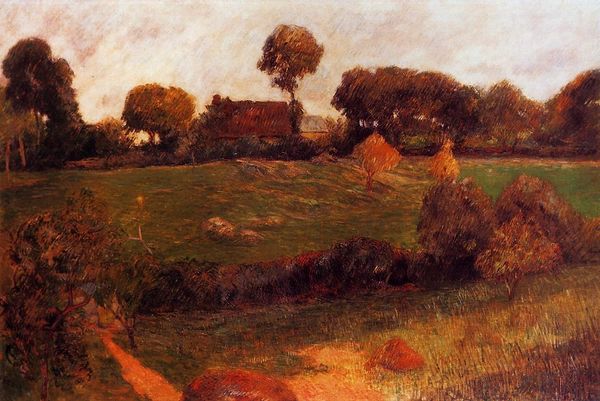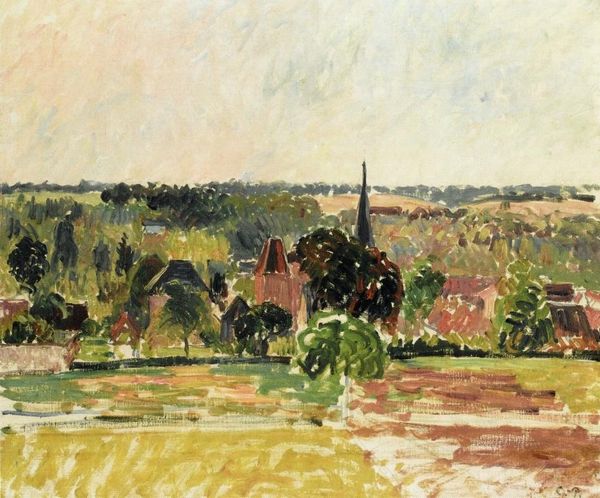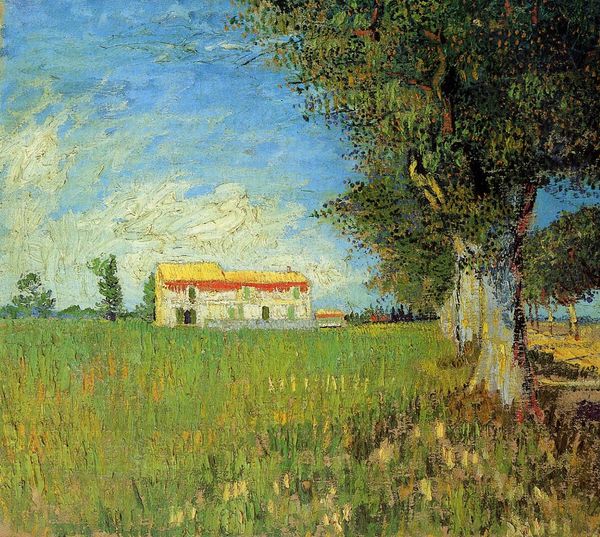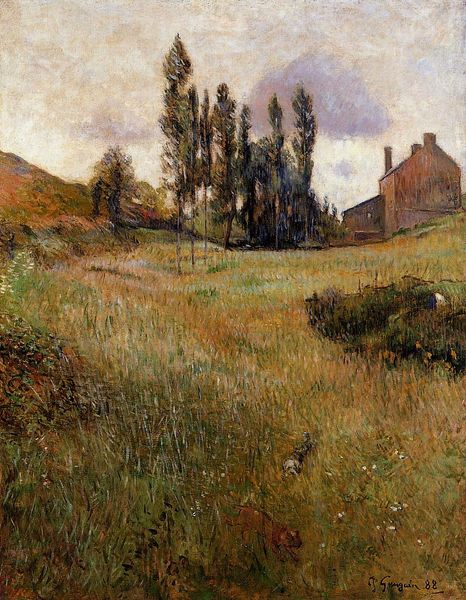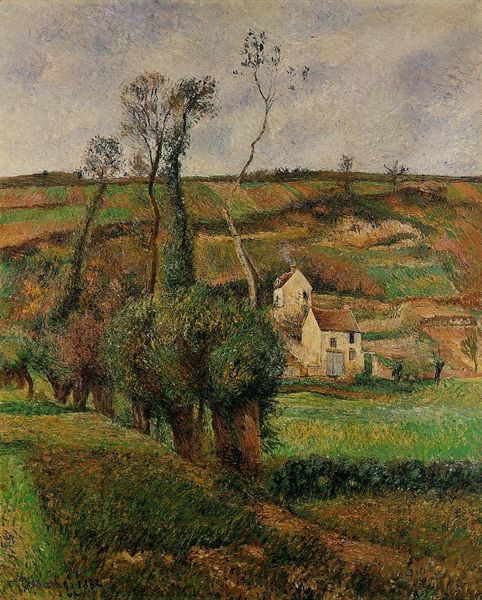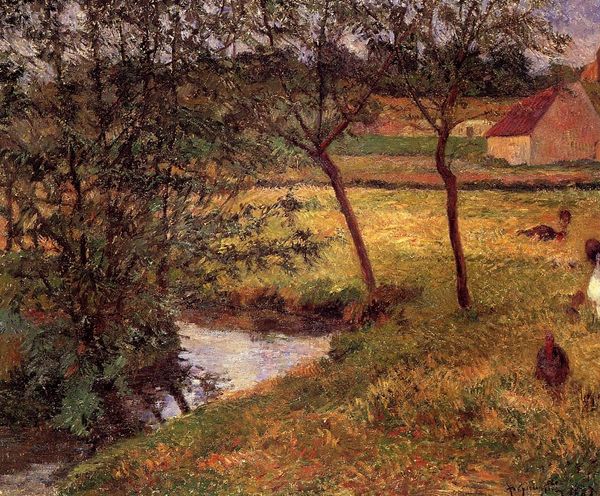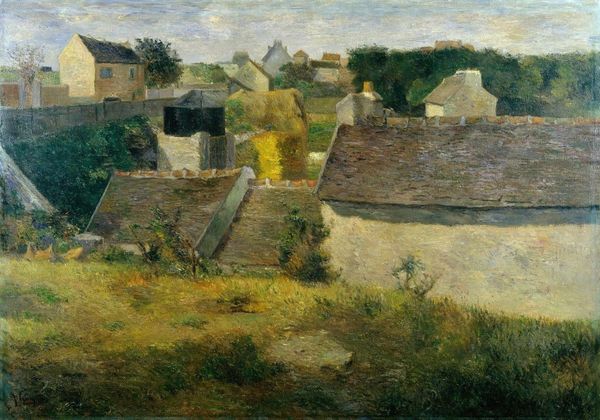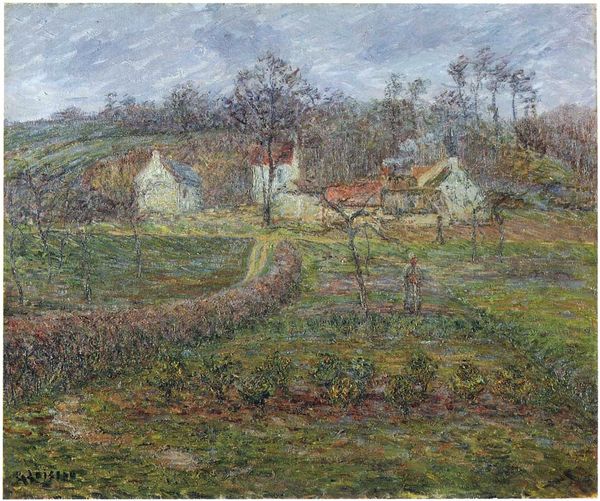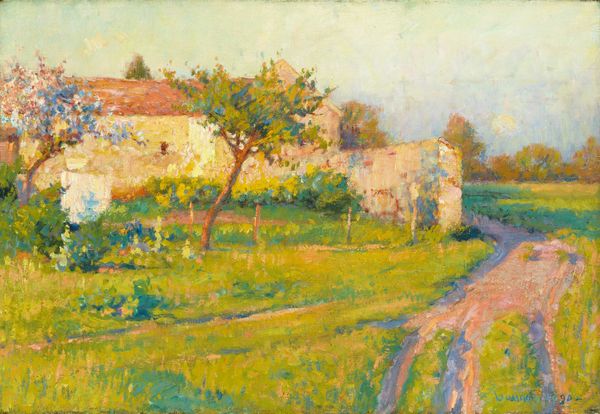
painting, plein-air, oil-paint, impasto
#
tree
#
sky
#
rural-area
#
painting
#
impressionism
#
impressionist painting style
#
plein-air
#
oil-paint
#
landscape
#
house
#
impressionist landscape
#
oil painting
#
impasto
#
painting painterly
#
impressionist inspired
#
building
Copyright: Public domain
Curator: What a sun-soaked scene. Looking at "Villers-le-Bel," or "The Enchanted Hour," painted by Childe Hassam in 1889, the overwhelming sensation is warmth. Editor: Enchanted is right! There’s almost a hazy, dreamlike quality to it. The colours feel muted and amplified all at once, like a memory struggling to surface. Curator: It’s important to contextualise Hassam's position during this period. As an American Impressionist, he often depicted scenes of burgeoning urban life. However, this work signals a deliberate return to the rural landscape of France. Consider this choice within the art world’s ongoing dialogue about progress, industrialization, and the perceived purity of nature. Editor: I see what you mean. Beyond the socio-political currents, the painting is ripe with symbolic imagery. The haystacks themselves, solid and plentiful, evoke ideas of agrarian plenty, and a timeless connection to land, echoed by a white building at the far end, a marker of home and community. Curator: Precisely. The positioning of the buildings in the distance also prompts questions about the relationship between man and nature. Hassam’s style echoes the impressionist tenet of painting en plein air—outside. It invites a discussion about labor, specifically rural labor, often unseen, yet vital to our existence. Furthermore, who is invited into this “enchanted hour?" Editor: A provocative query, indeed! The impasto technique—those thick strokes of oil paint—are particularly evocative to me, lending a tactile sense of the heat, the dense vegetation underfoot, and the labour embedded into the scene itself. Curator: I think you've brilliantly articulated how these stylistic elements connect with the underlying themes. Hassam invites us not merely to admire the scenery, but to question whose experiences are centered in this representation. Are these fields equally accessible, equally bountiful for all? Editor: I will definitely pause a little longer in front of the painting, and try to remember your insightful analysis. It is not simply about an Impressionist technique, but also about seeing labor, space and access in art. Curator: Precisely. Thinking about art beyond the surface is the only way of having true understanding and dialogue with the world.
Comments
No comments
Be the first to comment and join the conversation on the ultimate creative platform.

